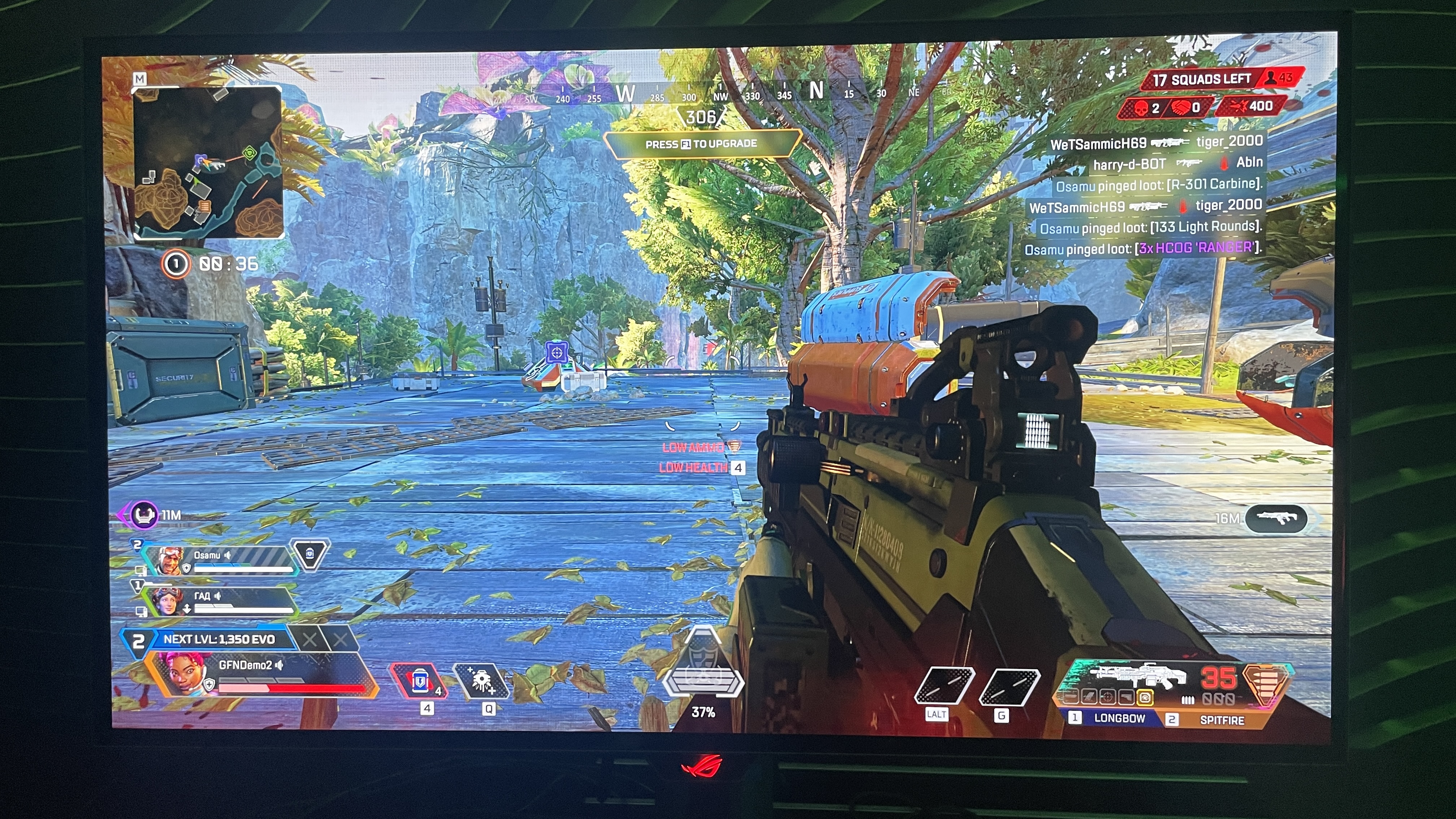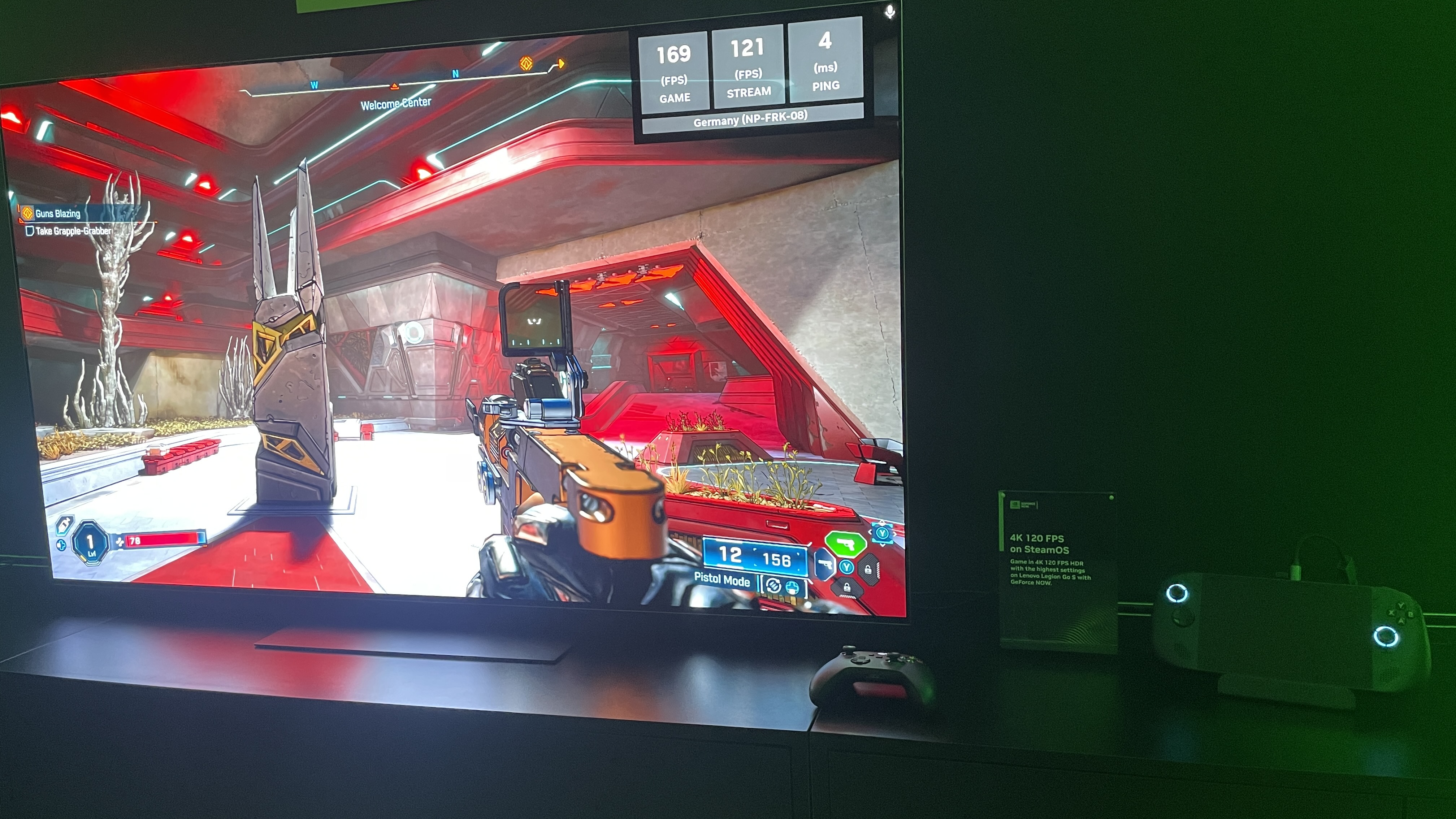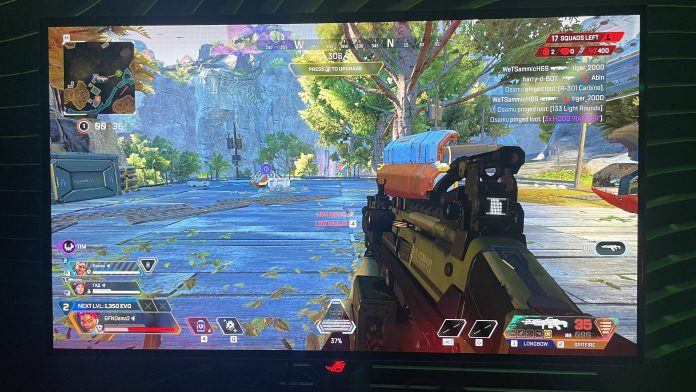
Nvidia recently announced its “biggest launch in GeForce Now RTX” history which includes an upgrade to RTX 5080 performance, and last week I got some hands-on time with the new and improved game streaming service. As a big proponent of local, discrete, good ol’ fashioned hardware, I wasn’t quite expecting how good it feels to play GeForce Now (GFN) on the latest Blackwell servers: I could not tell the difference. Like, at all.
At least, that was the case with Apex Legends at 1440p on low to medium settings. I’m talking of course, about latency, here, as that’s the main concern with competitive shooters, which is a genre that’s usually more my jam than the latest AAA singleplayer games.
You’ll get bigger benefits at 1080p, though. One of the upgrades coming to GFN is the ability to play at 360 fps at 1080p, and Nvidia had Overwatch 2 running at these settings with an LDAT (Latency and Display Analysis Tool) precisely measuring the total system latency. This is a little device that attaches to the monitor and records the time between pressing the button and the gunfire appearing on screen.
I pressed the heck out of that little button and I don’t think I saw it go above 20 ms, most often about 17 ms and sometimes as low as 16 ms. That’s low even for a local, non-streamed setup.
I found Apex Legends at 1440p more impressive than this, though, primarily because this is the resolution I usually play at. I got to actually run around and (attempt to) click heads in Apex on RTX 5080 GFN at this resolution, and I couldn’t tell it was streamed gameplay at all. I used to no-life competitive shooters like Counter-Strike, and I can tell you I would be happy playing that game competitively at 1440p if it maintains that level of snappiness.
I spoke to Nvidia GeForce Now product manager Michael McSorley, and he explained: “When we say 5080 performance, it’s actually, performance wise, more than a 5080 in some ways.” That’s because these “super pods”, as they call them, that run the new GFN instances, don’t just seat RTX 5080 graphics cards in there. A super pod is a bespoke Blackwell server setup specifically for GFN workloads, with future AI features in mind, too.

McSorley continues, “when we say 5080 performance, we’re really just trying to say, from a pure rasterisation standpoint and performance standpoint, it’s pretty similar to what a 5080 consumer GPU is.”
Whatever the technical details, I’m impressed. The improvements to latency, which the company says it has focused on in addition to visual fidelity, certainly seemed clear to me.
That’s not to say I think it’s perfect, however. While my experience of low latency was great at 1440p on low settings in Apex, I noticed a lot of latency in a recent Borderlands title (no, I couldn’t tell which one) running at 4K over GFN, and ditto Black Myth: Wukong. Frame rates were high, presumably thanks to frame gen, which also increases latency, but latency was pretty awful. Even for casual gaming, in my opinion.
This is part of what worries me about the direction PC gaming is heading. The RTX 50 series’ Multi-Frame Gen (MFG) is great for frame rates, sure, but it does increase latency, especially if you’re starting at a lower frame rate—and MFG might arguably encourage game devs to not optimise for pre-frame gen frame rates. Combine that with streaming, however optimised the experience, and you have extra latency.

I asked about getting this balance between visual quality and latency, and McSorley said: “When you look at the most compelling FPS or competitive titles on GeForce Now, they tend to not require, you know, Multi Frame Generation in general, to get the highest graphics fidelity, because that’s not really that style of game.”
On the other hand, there are “these immersive kinds of games” such as Assassin’s Creed, “that you’re going to sit back and play, where, if you’re adding 20 milliseconds of latency, it’s not going to be one that’s detrimental to the overall experience, right?”
That’s the theory, anyway, but as I said, I did think the latency was a little much in these high-fidelity “immersive” games on the highest settings. But again, I don’t know whether that’s a mark against GFN or frame gen. If I had to bet, I’d say frame gen, given the low latency I witnessed in Apex and 1080p Overwatch. Though I suppose it could also be added by the “Cinematic Quality Streaming” mode, which improves the video filter, offers a wider colour gamut, and so on.
The upgraded “more than a 5080” GFN experience will be rolling out pretty much right away, although games will be limited to start, with more compatible games being announced regularly. I’m told that we should see GeForce Now Thursdays—where new games are announced to the platform—including a section showing which of these games will be able to run on the new Blackwell hardware.
Apparently, “at some point, we’re certainly going to upgrade our entire fleet of servers”, but “we have to be strategic in how we do that.”
Though I suppose there’s no telling exactly how long that will take. For all we know, it could take up until the next GPU generation, though I’m hopeful it won’t take that long.

